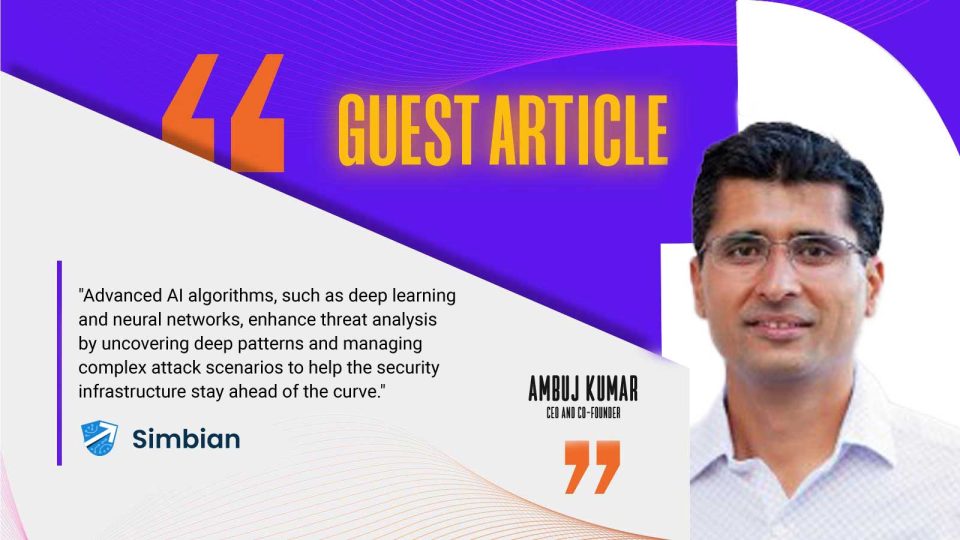In a world where cyber threats multiply faster than rabbits on caffeine, the rise of AI in cybersecurity isn’t just a trend—it’s a necessity.
With almost 92 percent of businesses either already using or planning to use machine learning (ML) and AI to enhance cybersecurity, and a projected market growth to $46.3 billion by 2027, it’s clear that clinging to outdated defenses is like bringing a knife to a cyber gunfight.
But picking the right AI security solution can feel like finding a needle in a haystack—if that haystack were on fire and crawling with cybercriminals. Simply incorporating AI into your security toolbox does not mean you are fully protected.
So, how do you choose the perfect digital guardian for your data fortress? Not all AI security solutions are created equal. Let’s dive in and review the Top Five must-haves when considering your next AI-based security solution.
Also Read: Top 5 Must-Know AI Use Cases in Cybersecurity: For CIOs
1. Must have enhanced Gen AI capabilities
Instead of grappling with intricate query languages, operations, and reverse engineering techniques to sift through extensive data for threat analysis, security teams should look to leverage generative AI. Gen AI can significantly cut down time spent in summarizing voluminous amounts of data that security operators deal with, and make it easy to transform between the multitude of tools that security operators switch between.
For instance, VirusTotal Code Insight, an integral component of Google’s Cloud Security AI Workbench, employs natural language summaries of code snippets. This feature aids security experts in comprehending and elucidating the behavior of malicious scripts, thereby bolstering their capacity to detect and counter potential attacks.
2. Must be a trustworthy co-pilot
Experts will attest that despite the uniqueness of each security event, task, or situation, there are significant commonalities among them. Reading between the lines and identifying data patterns can transfer valuable knowledge from one task to the next within a company. High-level patterns are often shared across organizations.
By leveraging AI, organizations can streamline this repetitive process, significantly accelerating security measures and enabling humans to focus on higher-level decision-making. It’s like having a security expert who’s always on duty, never sleeps, and gets smarter with every encounter. So, rest easy knowing that with AI as your co-pilot, your data is in good (digital) hands!
3. Must be powered by hardened LLMs
Security solutions must be underpinned by hardened and secure large language models (LLMs), rather than relying on the existing models that can be easily manipulated or prone to hallucinations.
Unlike standard LLMs, which might generate misleading or inaccurate responses, hardened LLMs are specifically designed and rigorously tested to withstand adversarial attacks and provide reliable, factual information. These robust models incorporate advanced security measures, such as enhanced data validation processes, stricter access controls, and continuous monitoring for anomalous behavior.
By leveraging secure LLMs, AI security solutions can ensure consistent and trustworthy performance, significantly reducing the risk of exploitation and enhancing the overall integrity of the systems they protect. This is essential in a landscape where cyber threats are increasingly sophisticated, and the potential consequences of misinformation or security breaches are growing even more severe.
Also Read: Security Operations Center (SOC) Best Practices and Steps in Building Process
4. Must use advanced AI algorithms
Choosing an AI tool that functions on advanced AI algorithms is crucial due to several key advantages. Advanced AI algorithms, such as deep learning and neural networks, enhance threat analysis by uncovering deep patterns and managing complex attack scenarios to help the security infrastructure stay ahead of the curve.
This is an important criterion because it adapts to evolving threats through continuous learning and behavioral analysis, ensuring up-to-date defenses. This continuous learning minimizes false positives and false negatives, making threat detection more reliable.
5. Must offer regular validation, improvement and updates
Regular updates ensure that the AI security solutions stay current with the latest threat intelligence, addressing newly discovered vulnerabilities and adapting to emerging cyber threats. It’s imperative to ensure that AI models consistently fulfil their intended objectives. Additionally, regular updates often include performance enhancements and new features, further improving the tool’s capabilities and efficiency.
Support services are equally critical, providing assistance with configuration, optimization, and troubleshooting to maximize the tool’s effectiveness. Comprehensive support and frequent updates also demonstrate the vendor’s commitment to maintaining and improving their product, giving users confidence in their investment. The vendor’s track record with previous customers in this regard is an important indicator to ensure you get the continuous support you deserve.
Conclusion
In recent years, the indispensability of AI technology has become increasingly evident in enhancing the capabilities of human information security teams. With the complexity of enterprise attack surfaces outpacing human capacity, AI is able to step in to offer crucial analysis and threat detection, empowering cybersecurity experts to mitigate breach risks and fortify security postures effectively.
Within the domain of security, AI plays a critical role in pinpointing and prioritizing risks, swiftly identifying malware across networks, guiding incident response procedures, and preemptively detecting intrusions before they materialize.
Also Read: Will AI Replace or Enhance Cybersecurity Engineering?
[To share your insights with us as part of editorial or sponsored content, please write to psen@itechseries.com]


